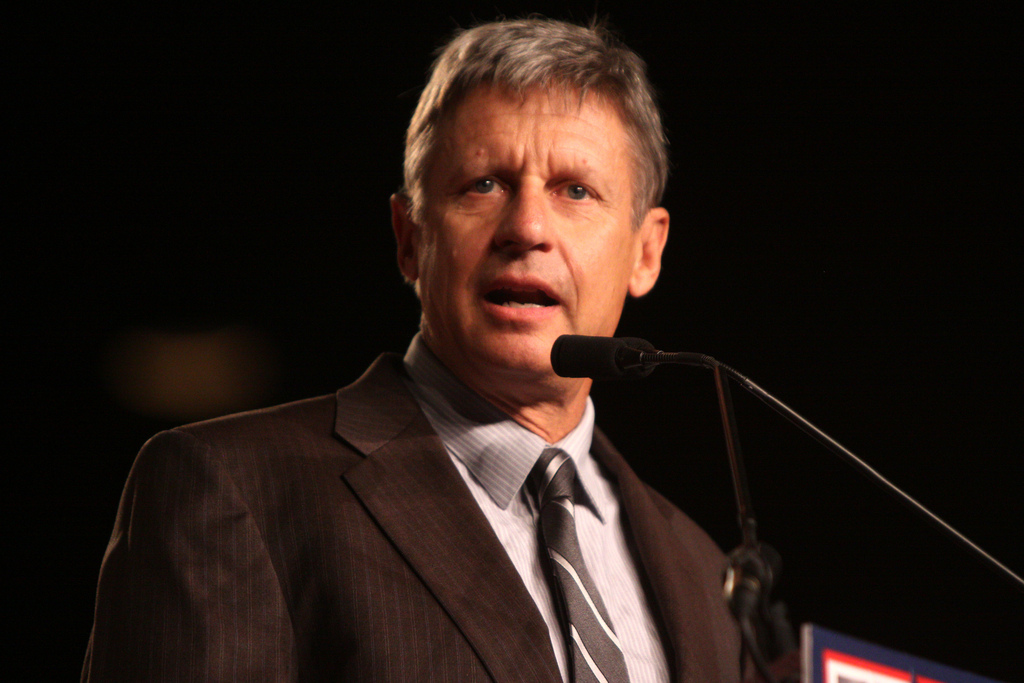As with so much in 2016 politics, a pattern is beginning to emerge that might have been hard even to imagine a year ago. When libertarian candidates have made inroads in the GOP in the past, it has often been in some of the party’s rightmost precincts. But [Gary] Johnson and [Bill] Weld thus far have enjoyed little success (and, to be fair, shown little interest) at wooing the most conservative elected officials and pundits. While the Libertarian ticket has been drawing an entirely unprecedented 8-10 percent in national polls, little of its energy comes from the Republican base. Instead, it is making noticeable gains in the center.
In one communication after another, the Johnson-Weld campaign strikes a theme seldom associated with past libertarian campaigns in the US: moderation. It is the “sane” choice, the “responsible” and “adult” ticket, the ones happy to work with the best people and ideas from both parties, campaigning not on fear and anger but on a positive message of problem-solving. A recent Johnson video contrasts a bickering, shouty Trump and Clinton with the cool-and-collected libertarian alternative.
As a more or less lifelong libertarian I’m still getting used to the idea of its being the middle position in an election, the oasis of sanity, the haven from extremism. But win or lose, I don’t think this campaign will be the last of what I’ve come to call libertarian centrism. That position has a logic of its own, as well as a considerable historical pedigree. […]
In Europe liberal parties, often seen as the nearest analogue of libertarian, are often perceived in just this way as occupying centrist/middle positions between labor or revolutionary parties on the left and blood-and-soil or religious parties on the right. European liberal tendencies vary but often they’re secular, business oriented, pro-trade, modern, internationalist but not militarist, and interested in meliorist reform rather than street politics or national crusades. Sound familiar?
Photo by Gage Skidmore 
